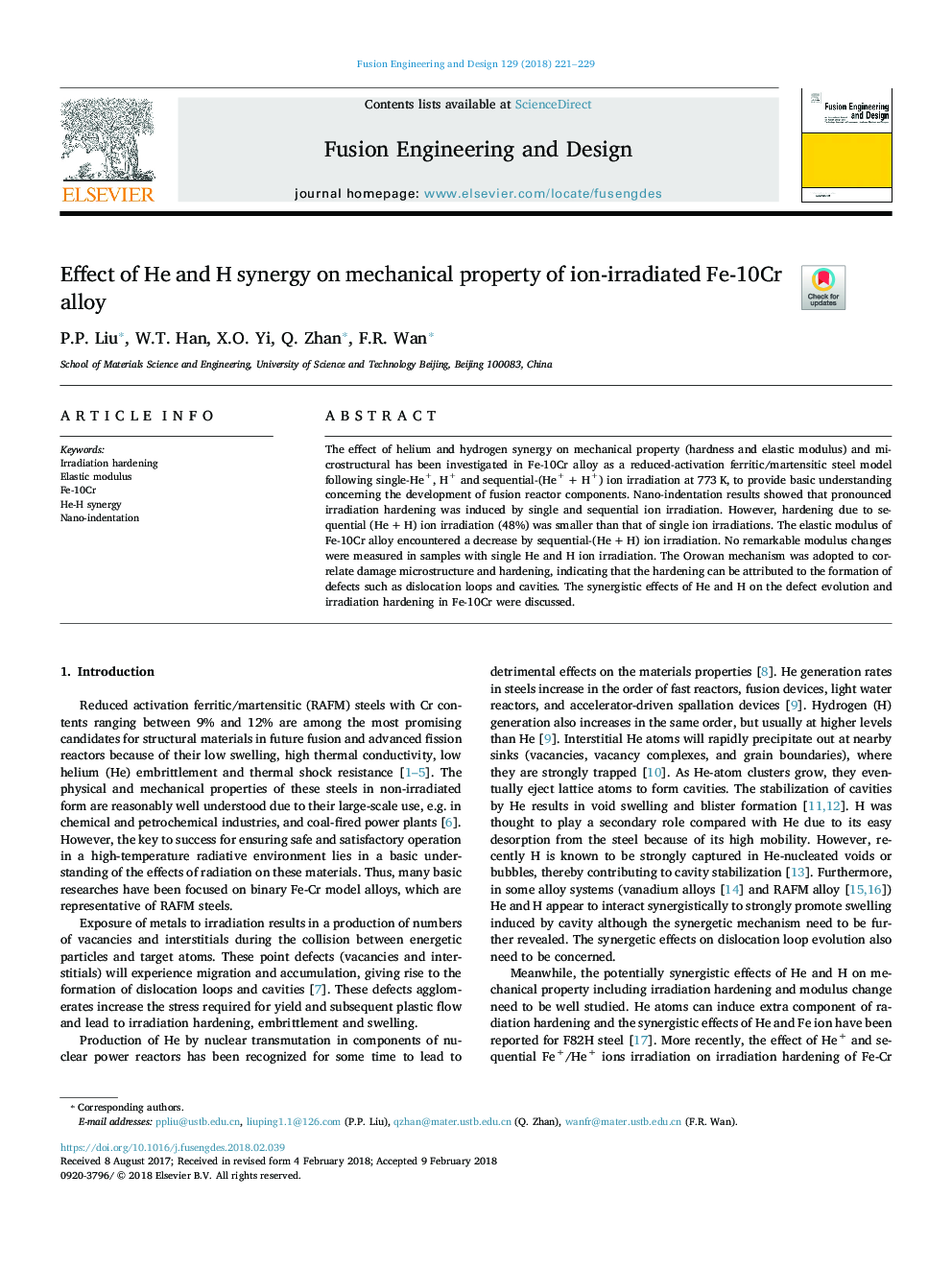| Article ID | Journal | Published Year | Pages | File Type |
|---|---|---|---|---|
| 6743223 | Fusion Engineering and Design | 2018 | 9 Pages |
Abstract
The effect of helium and hydrogen synergy on mechanical property (hardness and elastic modulus) and microstructural has been investigated in Fe-10Cr alloy as a reduced-activation ferritic/martensitic steel model following single-He+, H+ and sequential-(He+â¯+â¯H+) ion irradiation at 773â¯K, to provide basic understanding concerning the development of fusion reactor components. Nano-indentation results showed that pronounced irradiation hardening was induced by single and sequential ion irradiation. However, hardening due to sequential (Heâ¯+â¯H) ion irradiation (48%) was smaller than that of single ion irradiations. The elastic modulus of Fe-10Cr alloy encountered a decrease by sequential-(Heâ¯+â¯H) ion irradiation. No remarkable modulus changes were measured in samples with single He and H ion irradiation. The Orowan mechanism was adopted to correlate damage microstructure and hardening, indicating that the hardening can be attributed to the formation of defects such as dislocation loops and cavities. The synergistic effects of He and H on the defect evolution and irradiation hardening in Fe-10Cr were discussed.
Related Topics
Physical Sciences and Engineering
Energy
Energy Engineering and Power Technology
Authors
P.P. Liu, W.T. Han, X.O. Yi, Q. Zhan, F.R. Wan,
